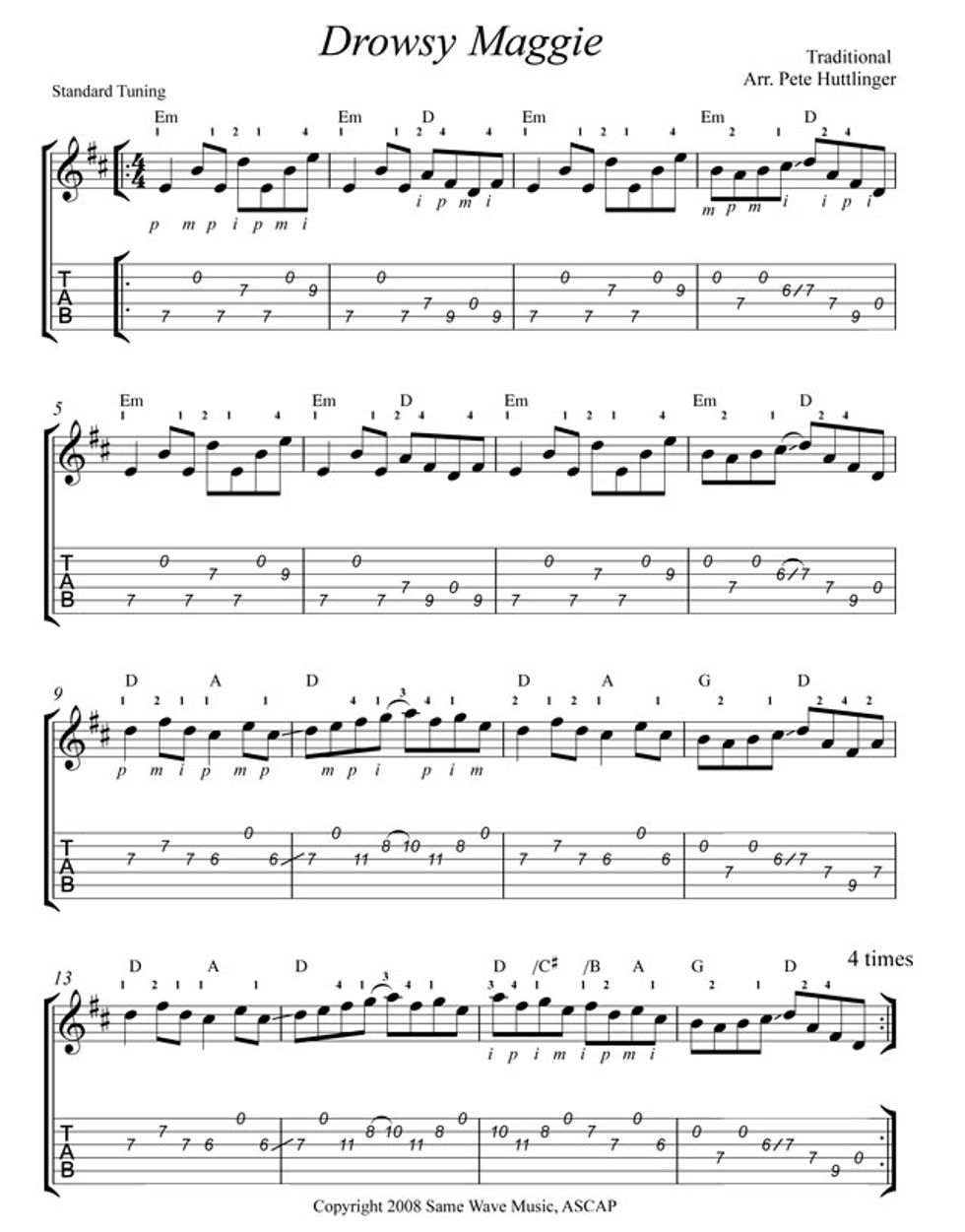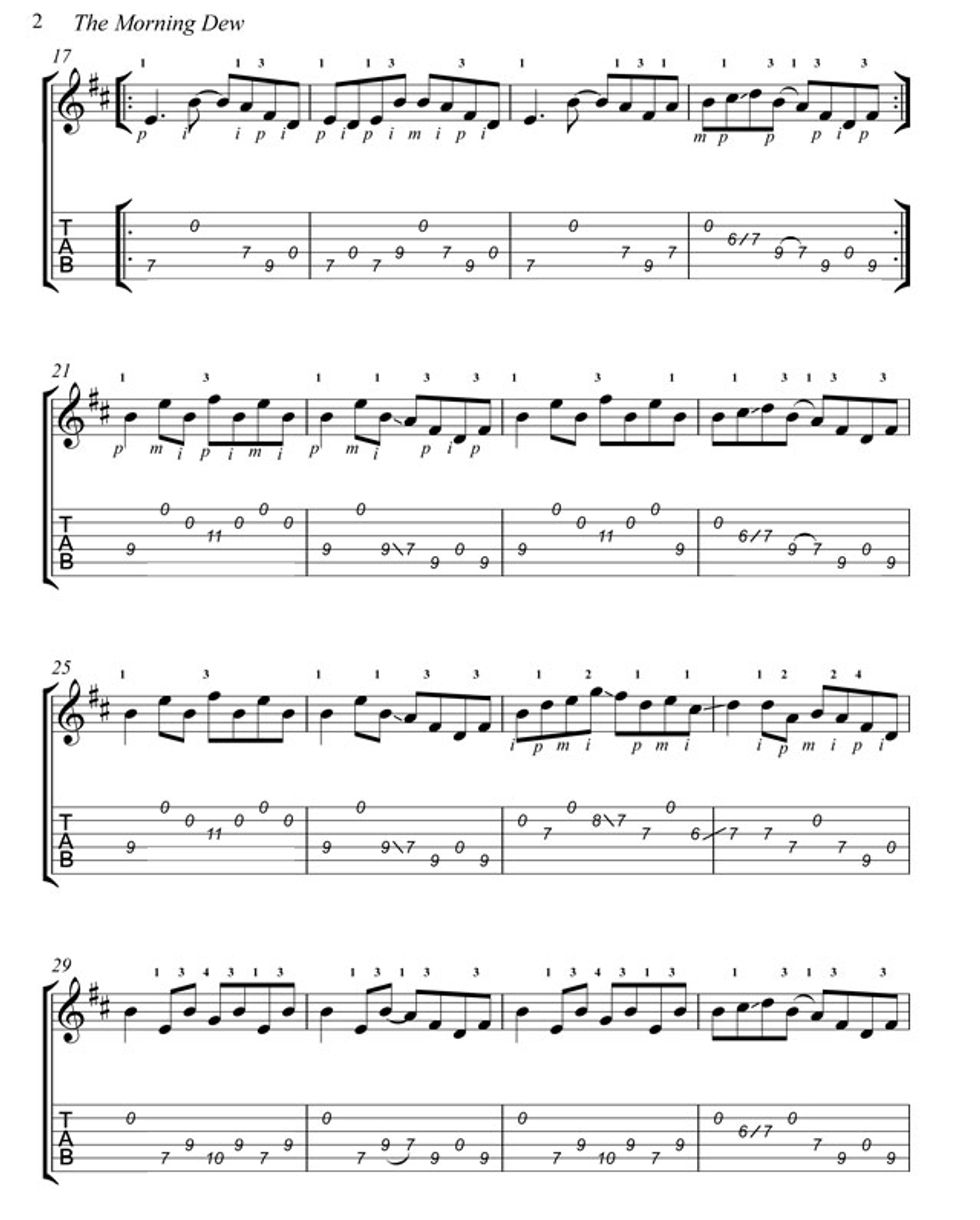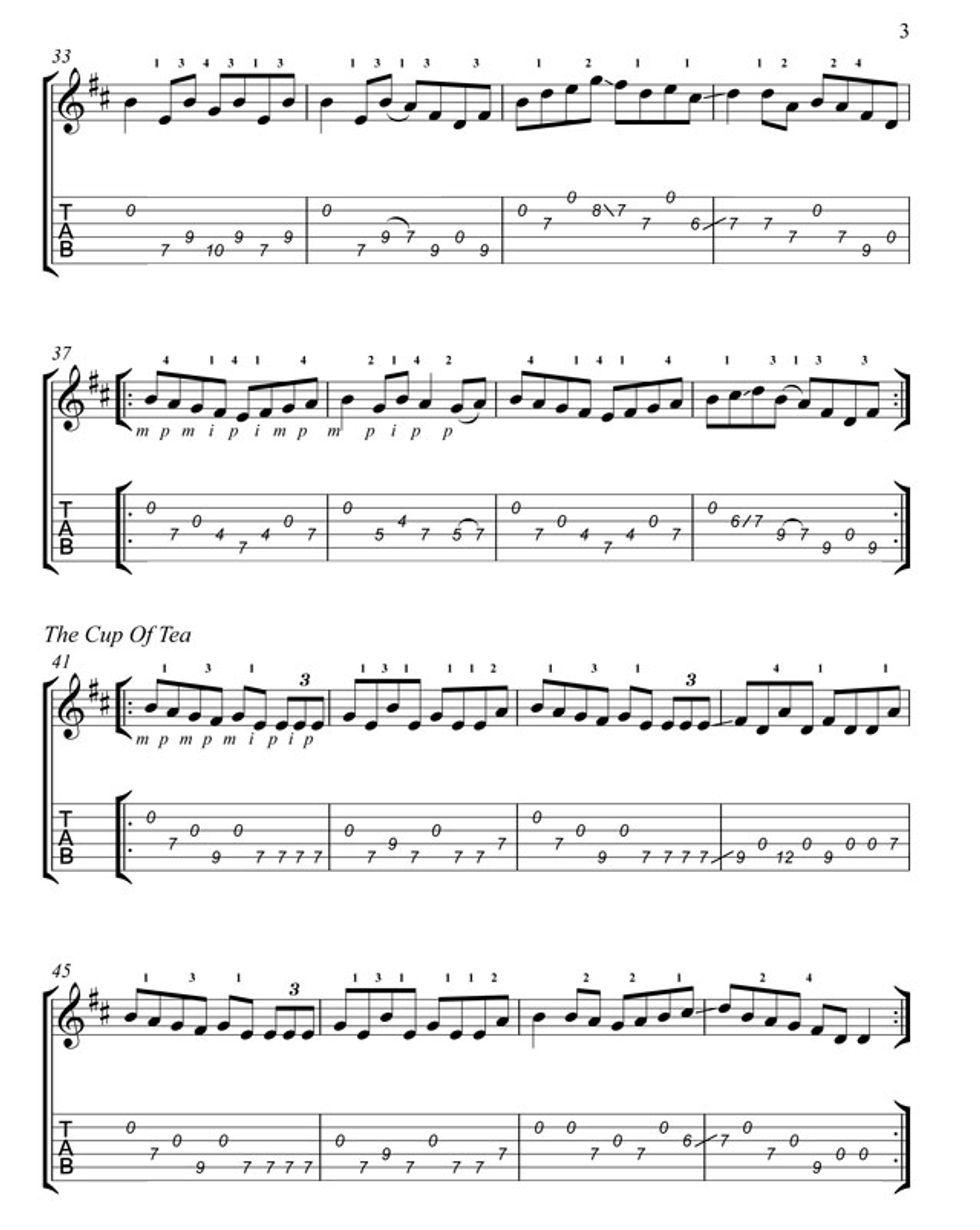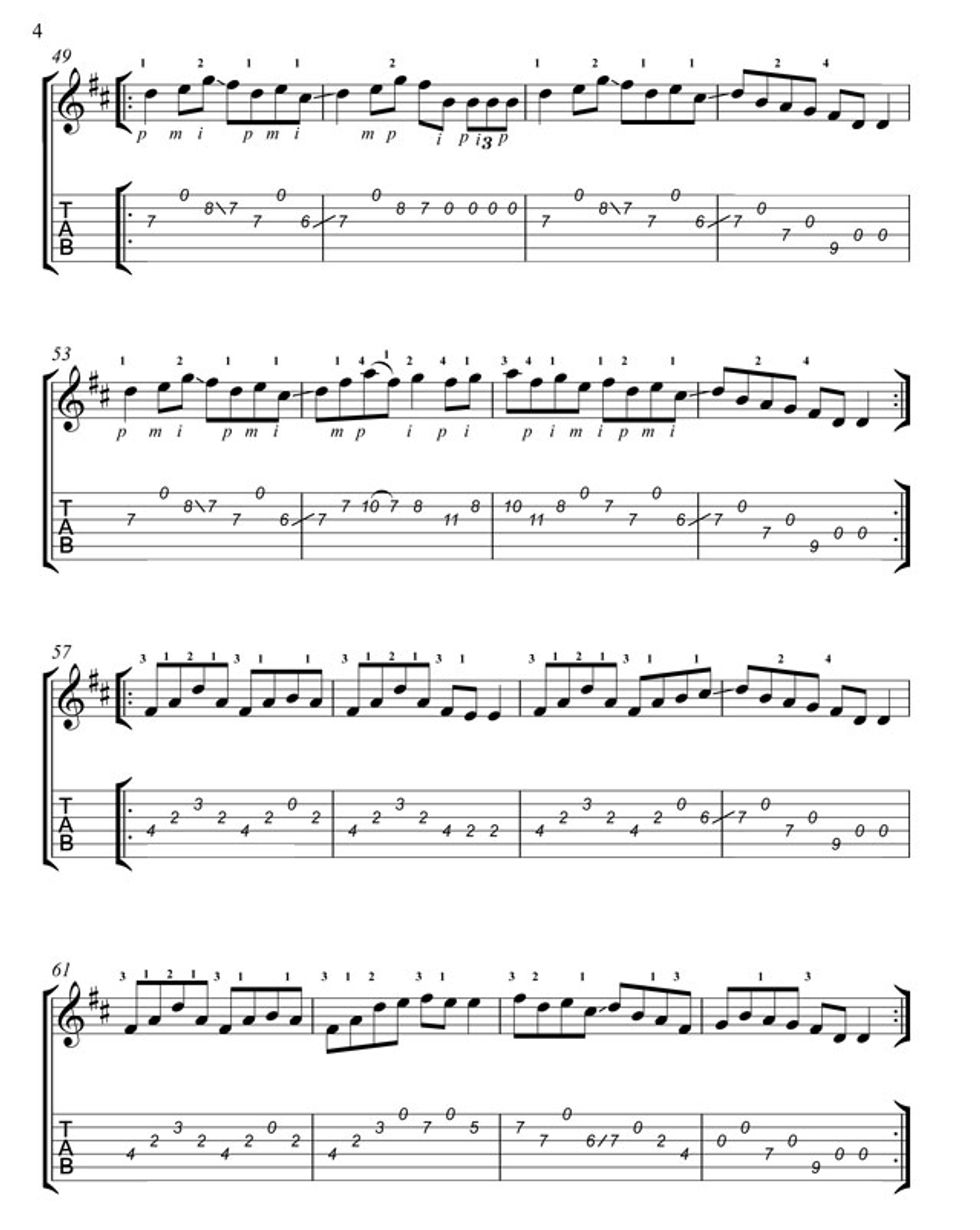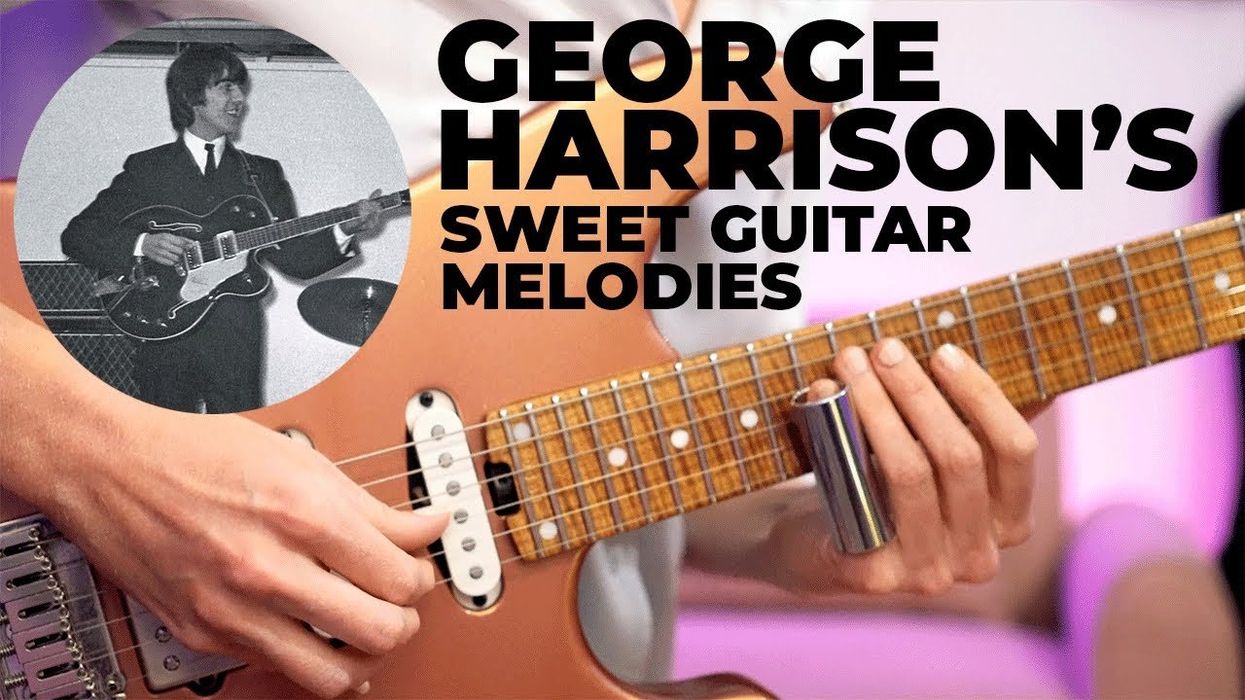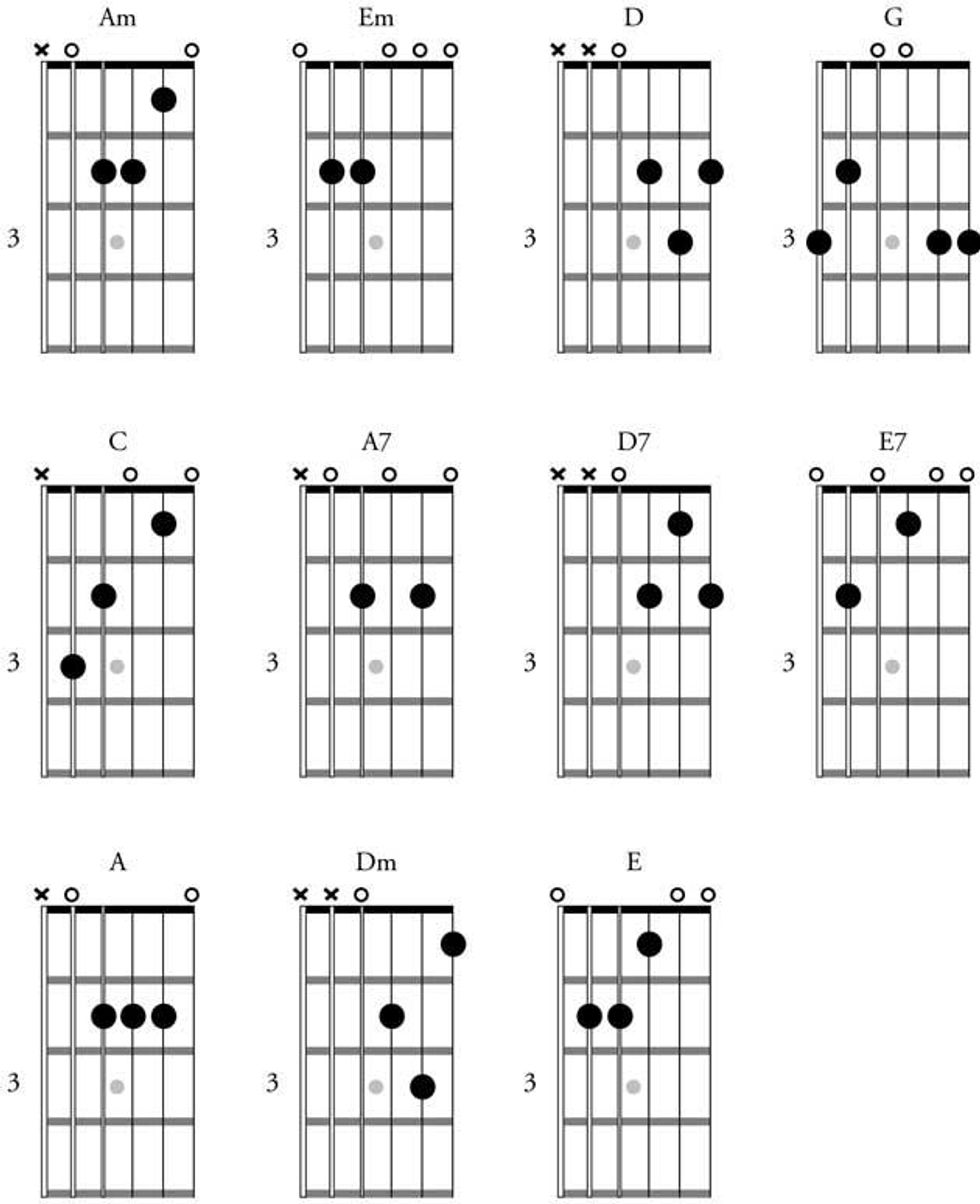Celtic music is often misunderstood
among guitarists. Many think if they
can tune their guitar to DADGAD and play
some triplets, they’ve got it. In fact, I hear
more guitar players playing “at” Celtic music
than those who actually give it its due. And
believe me, it is due a lot. These tunes have
been around for hundreds of years and for
good reason: Like any great folk style, this
music touches people’s souls. It defines a
people and brings up images of their lands,
whether it is the fog at the seashore or a
cloudy day over a green field filled with
sheep, or their thatched-roof homes and
their dances. If a musical genre touches me
and brings up such vivid pictures in my
mind, then that is good music for me.
So let’s talk about how to play this great
music and make it sound authentic. What
I’m presenting here is a medley of three
traditional Celtic tunes I arranged for fingerstyle
guitar. “Drowsy Maggie,” “The
Morning Dew,” and “The Cup of Tea” all
share a “morning” theme and were suggested
to me by Dave Firestine, a great player
from Arizona. We will look at a few excerpts
in this lesson, but for the full arrangement, look at the end of this lesson.
The thing I love about this medley is
that I get to use so many open strings.
Folks are always curious about the tuning
I use for this medley. They’ll ask, “Is that
DADGAD?” Jaws drop when I tell them
it’s good old standard tuning. You’ll need to
take your time working through these tunes
because the picking-hand fingerings are a
bit tough at first, thanks to all the cross-string
playing. Just work through a couple
of bars at a time and you’ll get it. I’ve
added fingerings for both hands wherever I
thought you’d benefit from them, and you’ll
notice there are lots of them.
If you’re familiar with the medley’s
first tune, “Drowsy Maggie,” you’ll notice
I changed one note—the high E—that
occurs at the end of measures 1, 3, 5, and
7, and is normally played down an octave.
I chose to raise it an octave to give the line
some momentum and separate the phrases.
Notice how the high E sustains and the
lower notes continue underneath. It’s very
important to plant your 4th finger solidly
on that high E to make this happen.
In measure 2, notice how the F# is
played on a lower string (the 5th) than the
D (the open 4th), even though it’s pitched
higher. This kind of refingering can be
tricky, but if you’ll play this phrase over and
over, you’ll get it. Such cross-string fingerings
come up many times in this medley, so
it’s best to get used to the concept quickly.
Make sure you slide from the C# to the D
in measure 4. This slide gets you in position
for the last three notes of the measure.
One of the longer, cascading runs is
shown in Fig. 1. The slide from C# to D
and the hammer-on from G to A are crucial
to making this phrase smooth, and the fingerings
are very important for the cascading
thirds in the example’s fourth measure.

The second tune in the set is “Morning
Dew.” This one has four 8-measure phrases,
so it’s a bit of a longer form. The first thing
to notice here is the passage shown in Fig. 2.
Once again, higher notes (F# and E) are played
on lower strings than the D. In the example’s
fourth measure, there’s a slide from C# to D
that’s immediately followed by the pull-off
from B to A. This mix of slides, pull-offs, and
open strings is essential to emulating the harp-like
flow found in many Celtic tunes.

“The Cup of Tea” is a three-part tune with
three 8-measure sections. Here’s where those
pesky triplets come into play: In the first section
shown in Fig. 3, the triplets appear in
the example’s first, third, and fifth measures.
I can’t stress enough how important it is to
understand the triplet in Celtic music. They
simply have to be played cleanly and evenly.
To my way of thinking, if you don’t play parts
like this cleanly, then why play at all? If a guitarist
doesn’t care enough about the notes to
make them all be heard, I just lose interest.
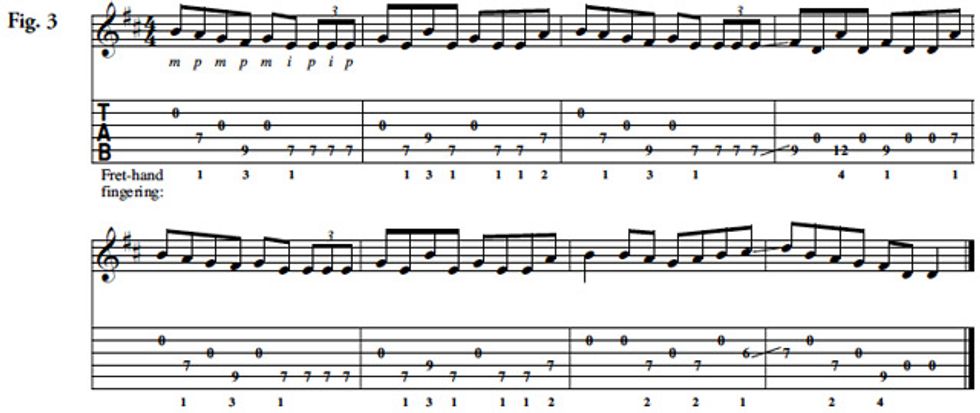
The passage shown in Fig. 4 is probably
the most difficult to play in the entire
medley. So many of the elements we’ve used
up to now occur here. The picking-hand
thumb plays all the way down on the 2nd
string—this is important for the strength
of the melody. We have ascending and
descending slides in the example’s first two
measures, a triplet in the second measure,
and a pull-off in the sixth measure.
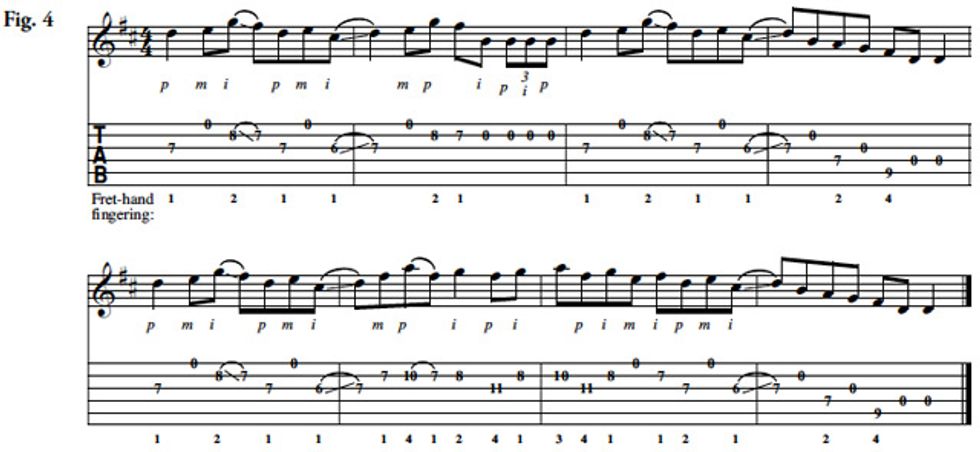
The last section of this tune—measures
57-64 in the arrangement—provides a
nice way to wind down for both you and
your listeners. It emphasizes chords, so
the extended flurry of single-note playing
finally resolves.
In Celtic music, so much is communicated
in the ways that players approach a given
set of notes. A fiddler will include slides,
hammers, and pulls, and an Irish whistle
player (whose instrument is also known as a
penny whistle or tin whistle) will bend notes
or finger a repeated pitch differently to create
tonal variety. As guitar players, we should
learn from them and do the same. We have
so many options: We can bend up to a note,
or pre-bend a note, strike it, and then release
the bend. We can slide up or down. We
can add hammer-ons and pull-offs. Keep
all these things in mind as you play not just
Celtic music, but all music. I think you’ll be
amazed at what you can come up with.
Pete Huttlinger has become widely known as one
of the most awe-inspiring acoustic guitar players
in the world. His unique arrangements and spellbinding
musicality and precision have entertained
audiences from Los Angeles to Milan. As a
recording artist, Huttlinger has released numerous
albums and performed at all three of the
Crossroads Festivals. For more information about
his latest release, Finger Picking Wonder-The
Music of Stevie Wonder, visit petehuttlinger.com.
Photo by Paul Schatzkin.

